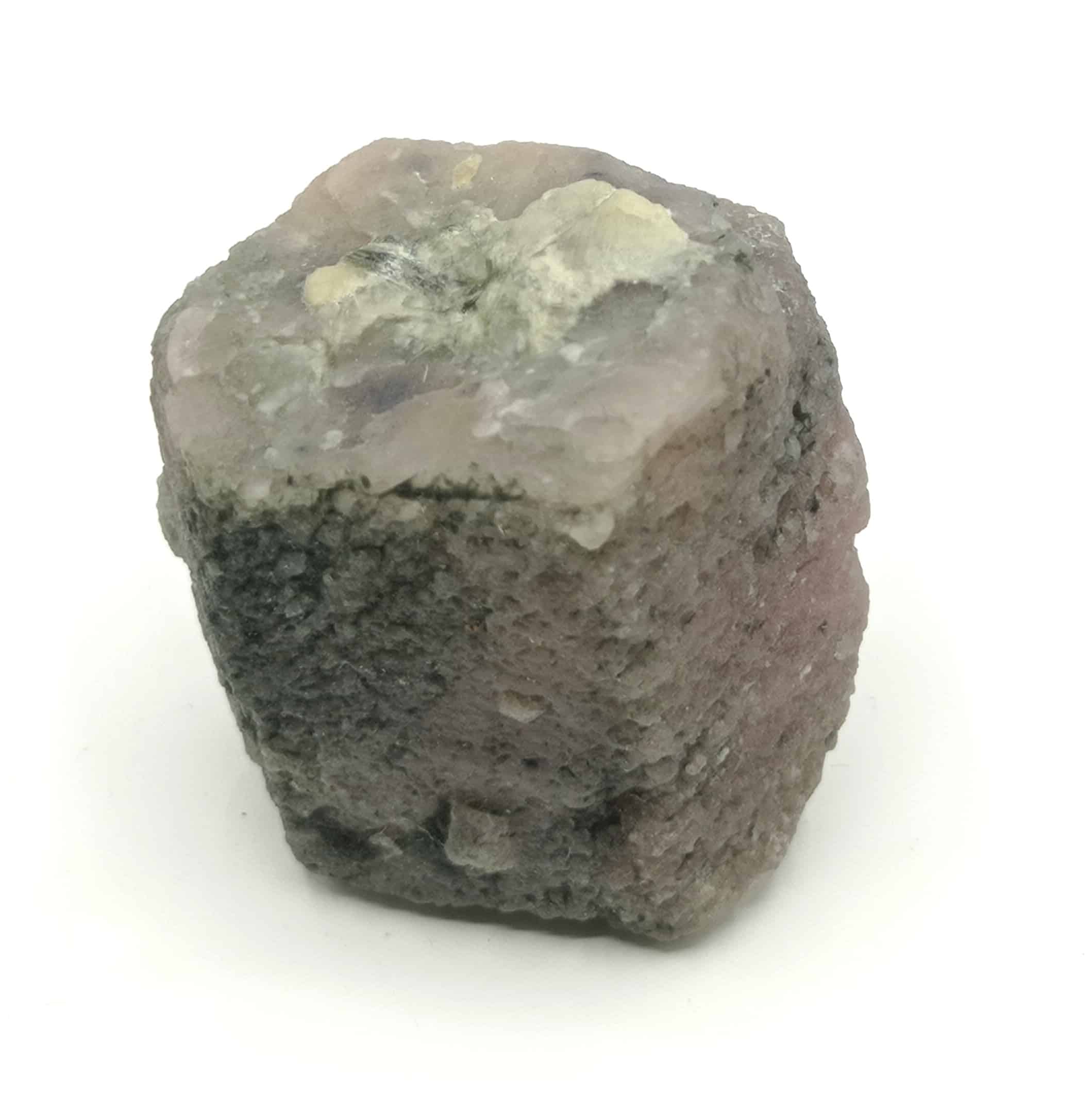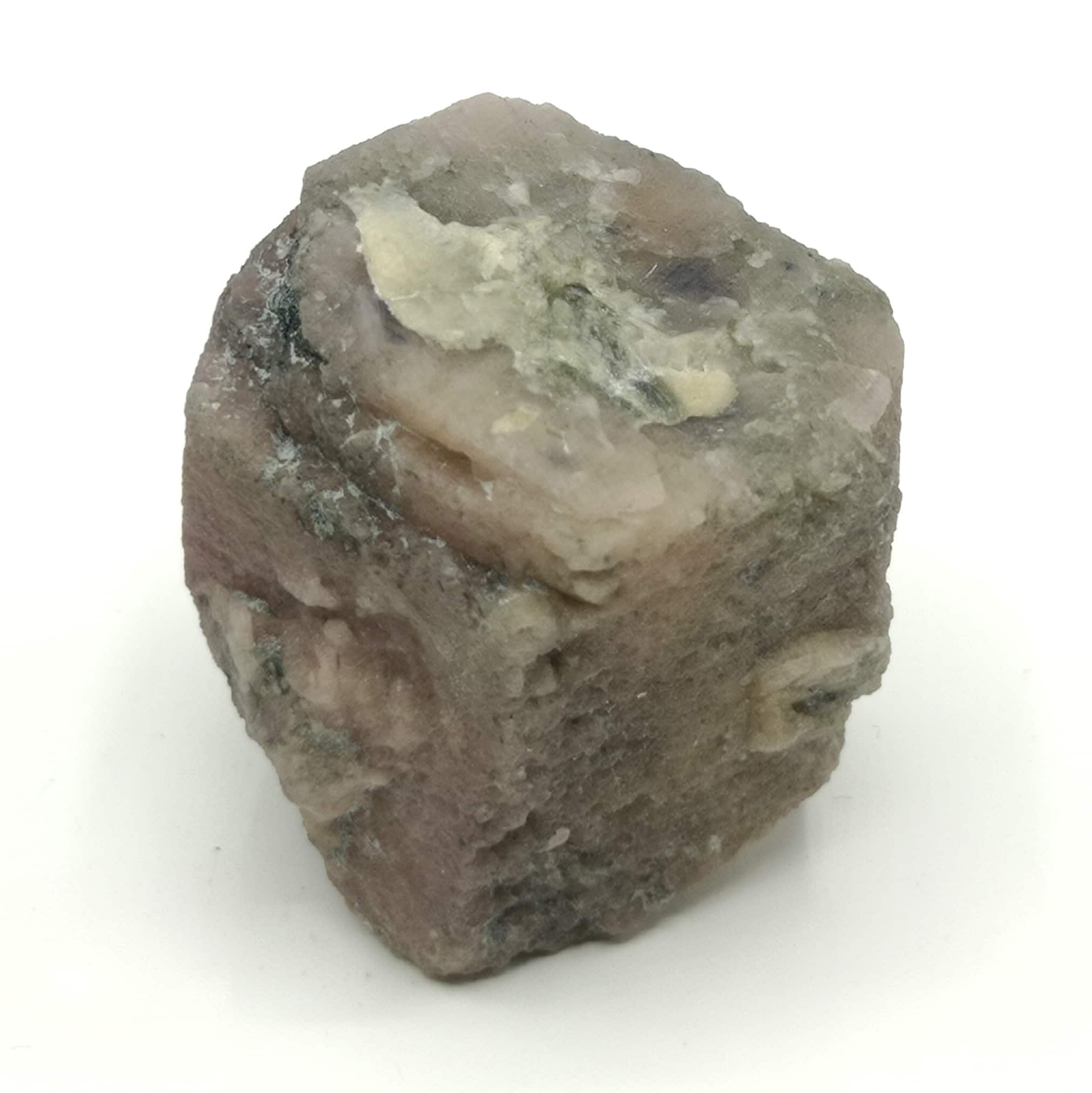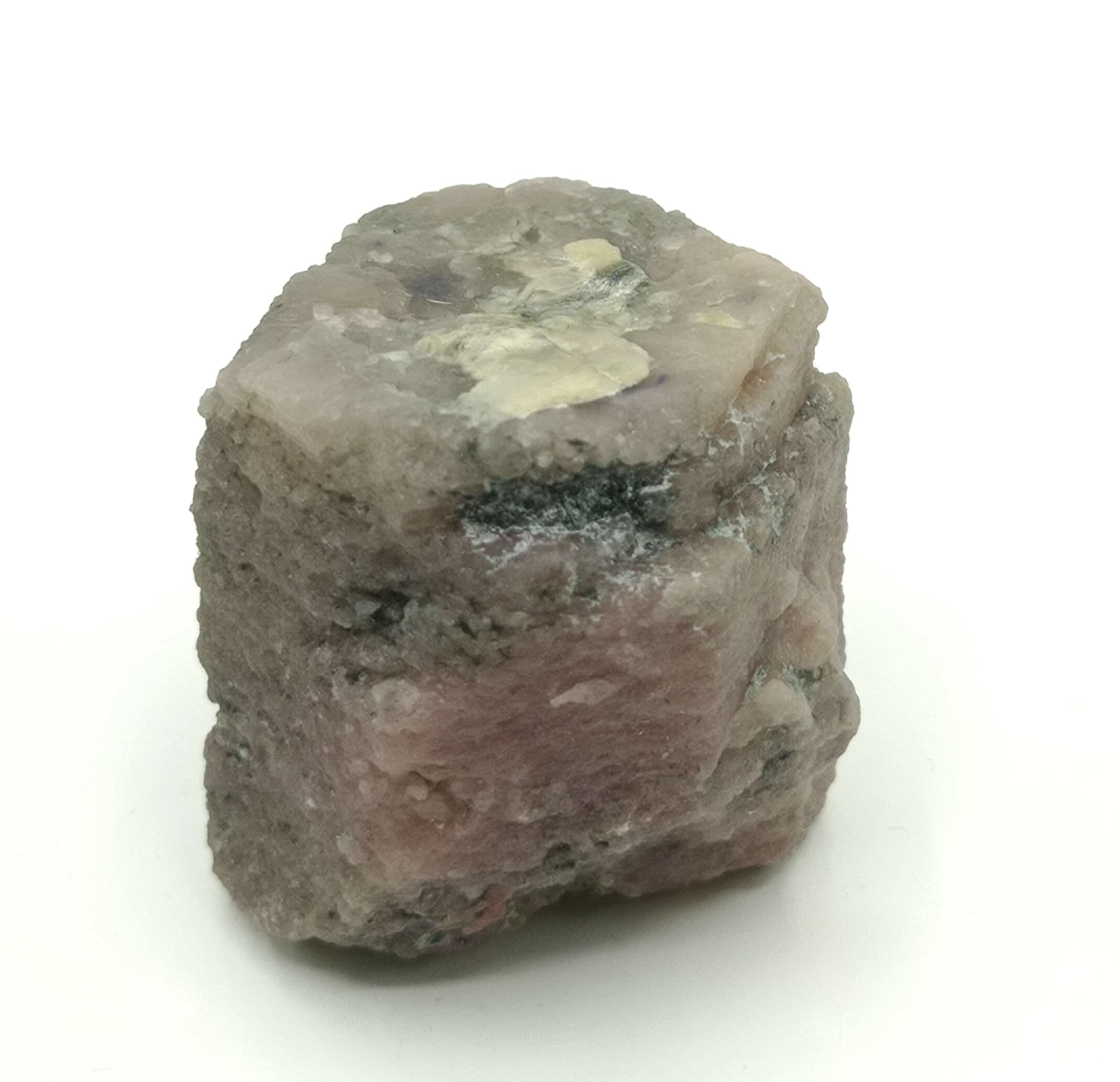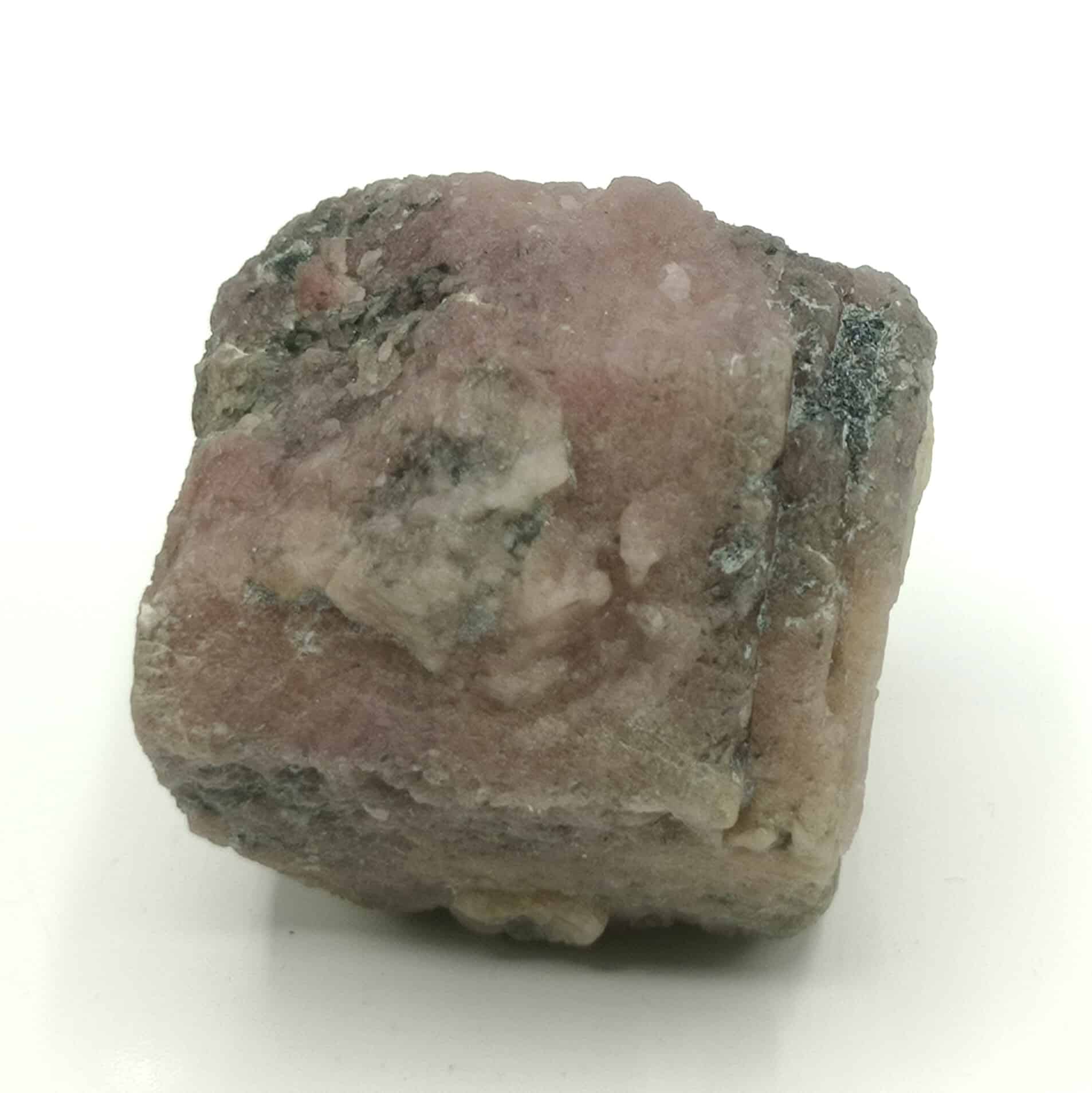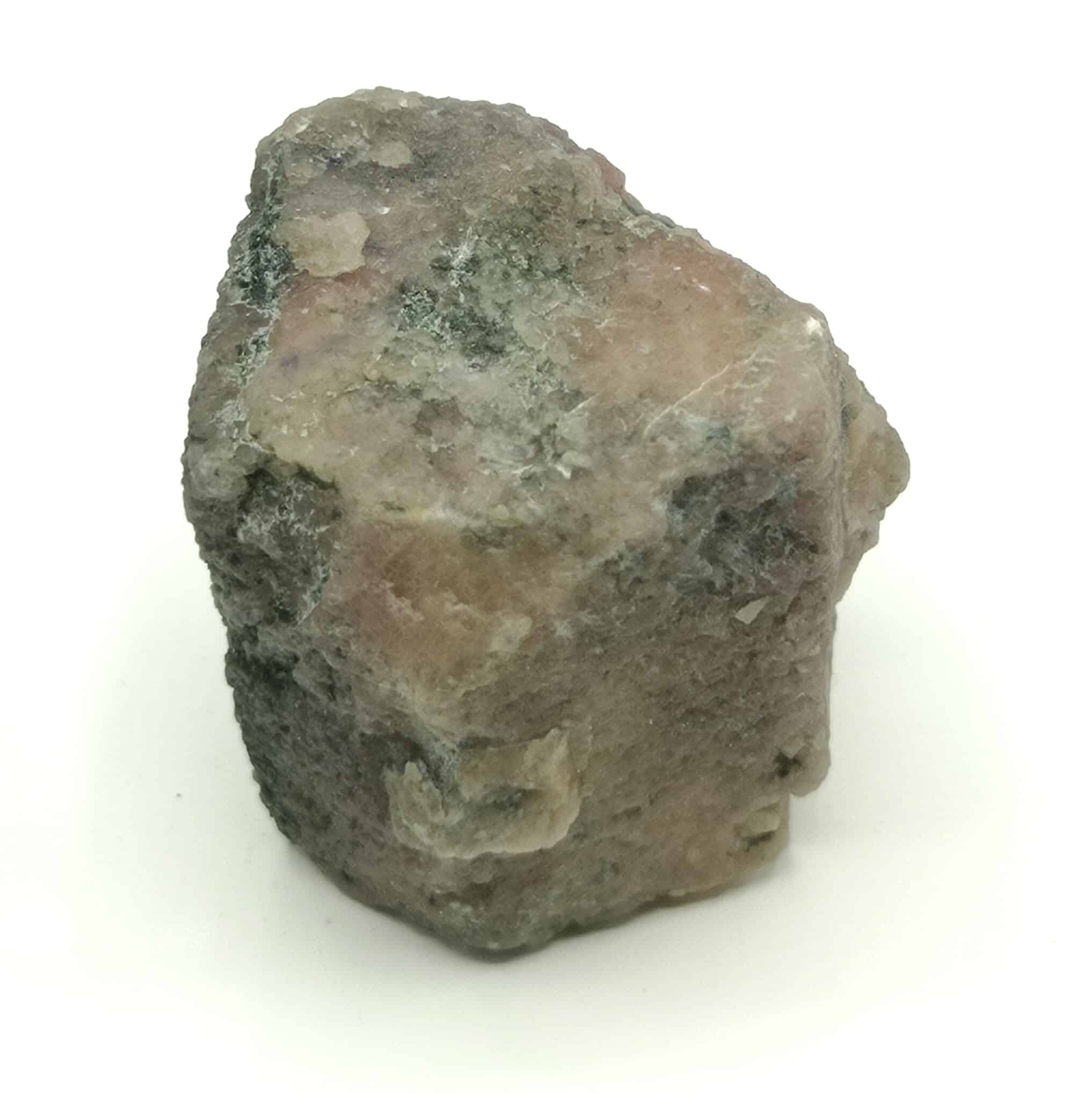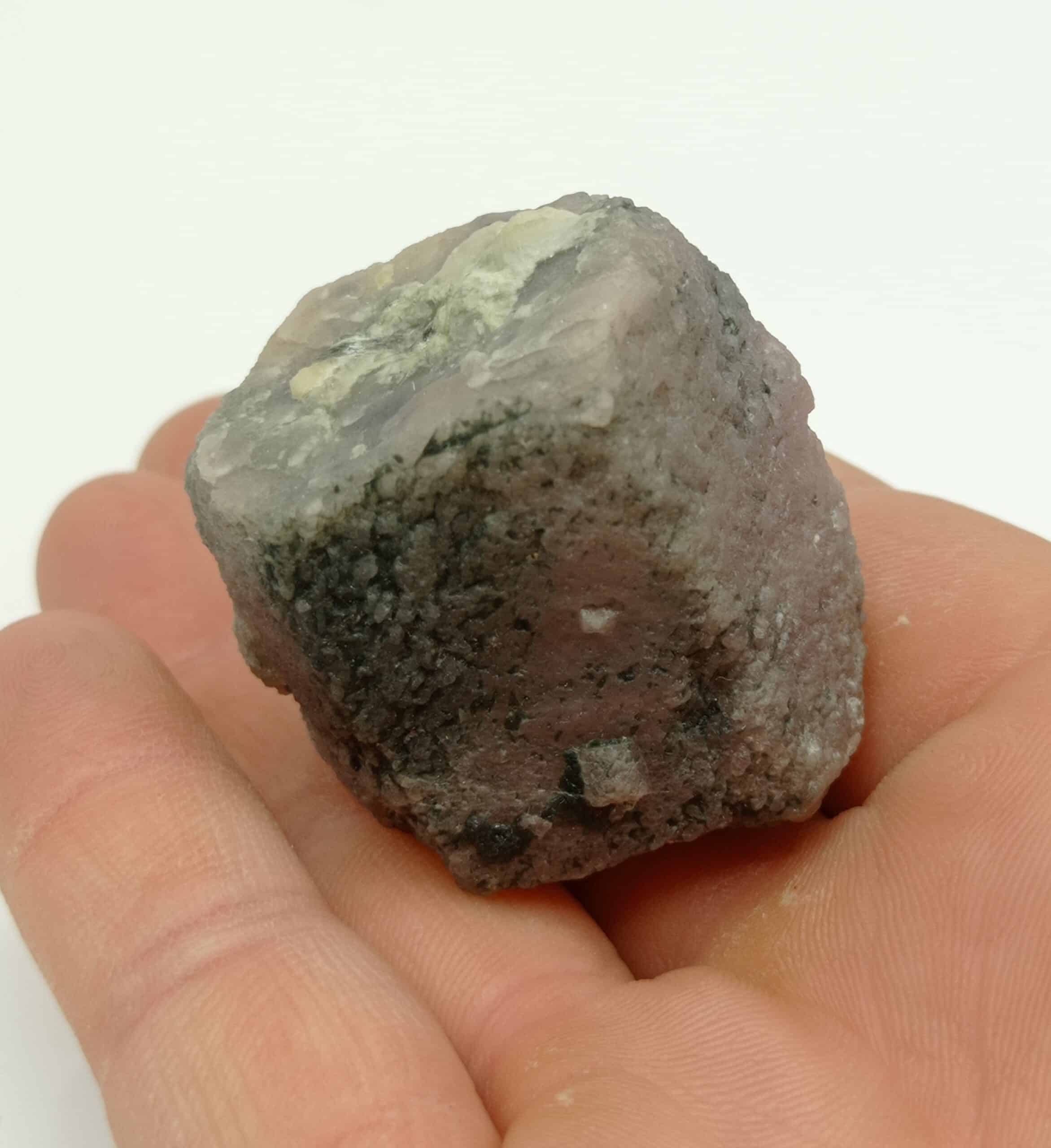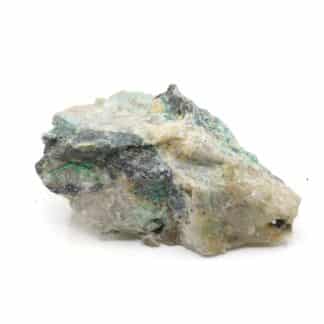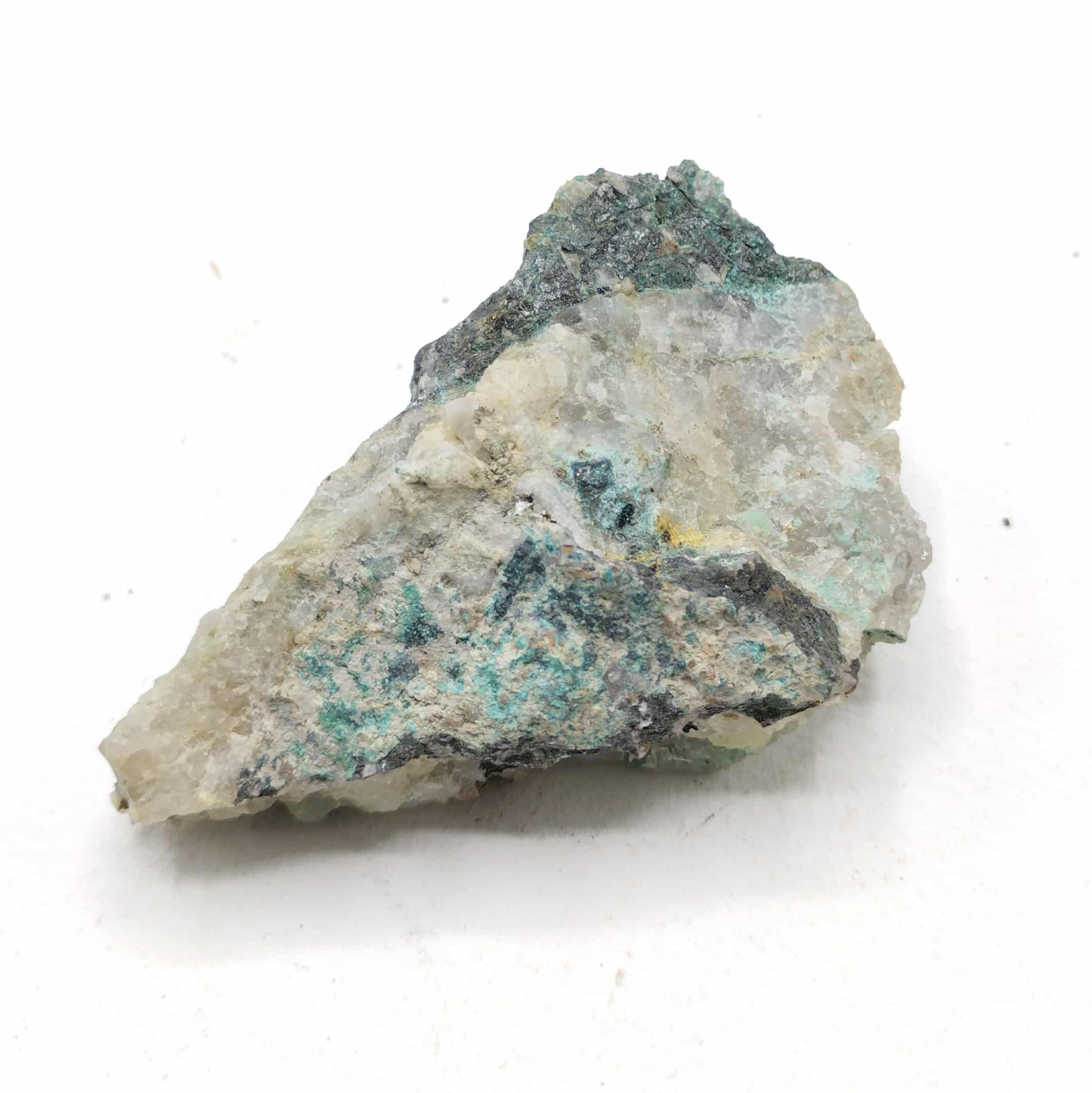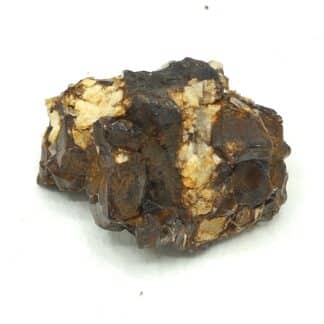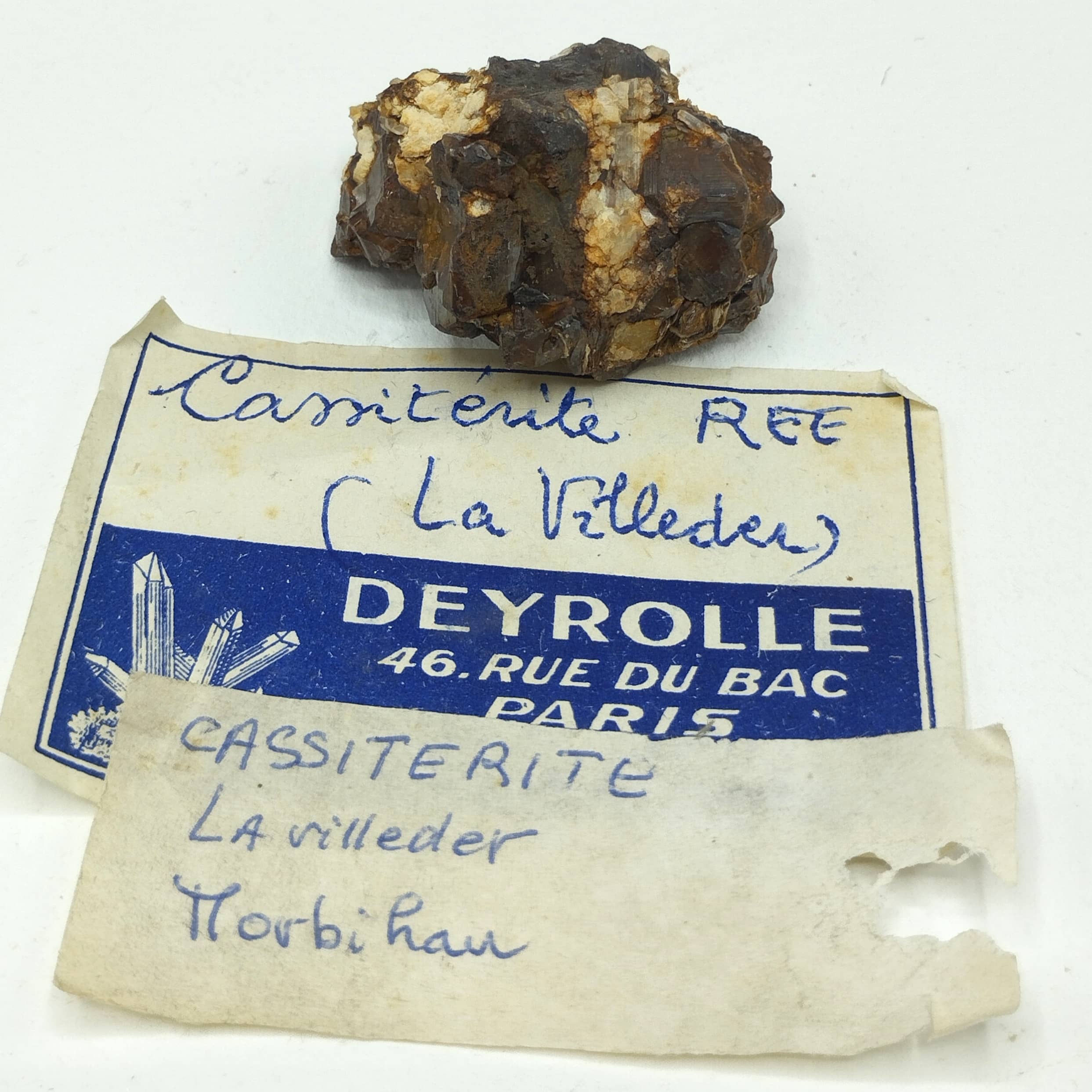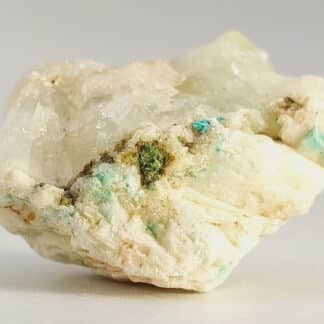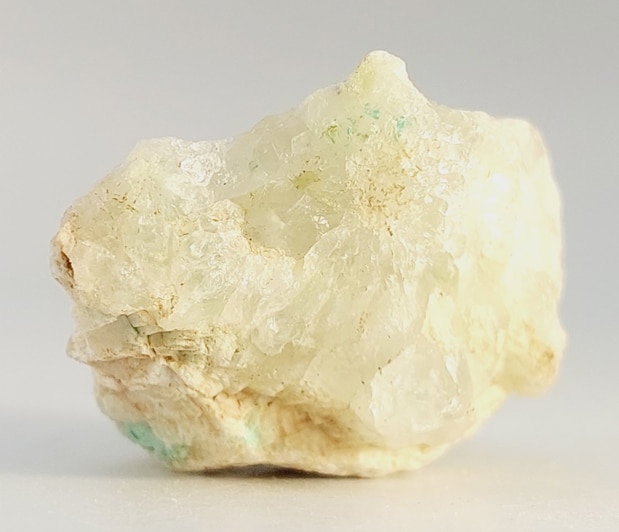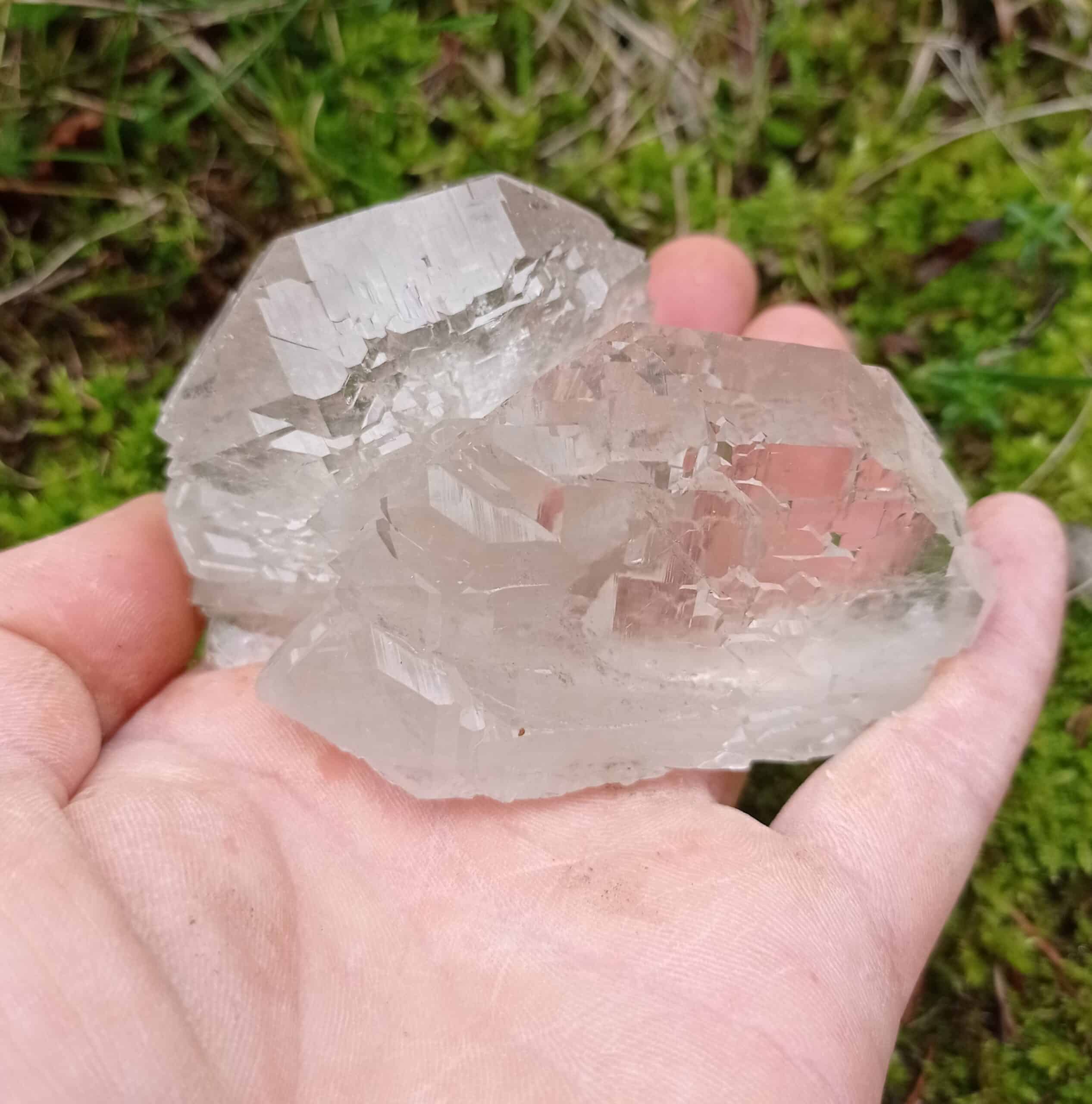Description
Beautiful piece of pink to purplish hexagonal ruby, a variety of corundum from the vicinity of Moulin de la Rode in Viala-du-Tarn in the Aveyron department. The locality is known in the old literature under the name of Pont de la Rode, as in the notice of the geological map of the BRGM, but this toponym does not appear any more on the IGN maps currently.
We can read in the notice of the geological map of the BRGM, that in the surroundings of the bridge of the Rode, we find as rock :
- Black amphibolite with zoïsite. This type is the most frequent (P. Collomb, 1970). The paragenesis observed is bimineral and consists of pargasite and zoïsite. The latter is presented in beds or in sprays of centimetric crystals. Locally the rock passes to true zoïsitites. In some facies with very large zoïsite crystals (more than 10 cm), a pink corundum in centimetric grains completes the paragenesis (RD 73, in the Rouquette ravine).
-
- Monomineral pargasitite. On the edge of the RD 73, near the serpentinites, a small mass of pargasitites with an equant texture and centimetric to decimetric grains outcrops. This material could perhaps be derived from ancient pyroxenic cumulates with large crystals accompanying the original peridotites.
An exceptional specimen of French ruby, of which here is a video:
This post is also available in: French
